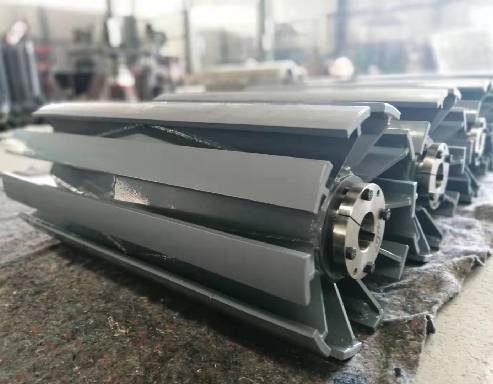 Afrikaans
Afrikaans  Albanian
Albanian  Amharic
Amharic  Arabic
Arabic  Armenian
Armenian  Azerbaijani
Azerbaijani  Basque
Basque  Belarusian
Belarusian  Bengali
Bengali  Bosnian
Bosnian  Bulgarian
Bulgarian  Catalan
Catalan  Cebuano
Cebuano  Corsican
Corsican  Croatian
Croatian  Czech
Czech  Danish
Danish  Dutch
Dutch  English
English  Esperanto
Esperanto  Estonian
Estonian  Finnish
Finnish  French
French  Frisian
Frisian  Galician
Galician  Georgian
Georgian  German
German  Greek
Greek  Gujarati
Gujarati  Haitian Creole
Haitian Creole  hausa
hausa  hawaiian
hawaiian  Hebrew
Hebrew  Hindi
Hindi  Miao
Miao  Hungarian
Hungarian  Icelandic
Icelandic  igbo
igbo  Indonesian
Indonesian  irish
irish  Italian
Italian  Japanese
Japanese  Javanese
Javanese  Kannada
Kannada  kazakh
kazakh  Khmer
Khmer  Rwandese
Rwandese  Korean
Korean  Kurdish
Kurdish  Kyrgyz
Kyrgyz  Lao
Lao  Latin
Latin  Latvian
Latvian  Lithuanian
Lithuanian  Luxembourgish
Luxembourgish  Macedonian
Macedonian  Malgashi
Malgashi  Malay
Malay  Malayalam
Malayalam  Maltese
Maltese  Maori
Maori  Marathi
Marathi  Mongolian
Mongolian  Myanmar
Myanmar  Nepali
Nepali  Norwegian
Norwegian  Norwegian
Norwegian  Occitan
Occitan  Pashto
Pashto  Persian
Persian  Polish
Polish  Portuguese
Portuguese  Punjabi
Punjabi  Romanian
Romanian  Russian
Russian  Samoan
Samoan  Scottish Gaelic
Scottish Gaelic  Serbian
Serbian  Sesotho
Sesotho  Shona
Shona  Sindhi
Sindhi  Sinhala
Sinhala  Slovak
Slovak  Slovenian
Slovenian  Somali
Somali  Spanish
Spanish  Sundanese
Sundanese  Swahili
Swahili  Swedish
Swedish  Tagalog
Tagalog  Tajik
Tajik  Tamil
Tamil  Tatar
Tatar  Telugu
Telugu  Thai
Thai  Turkish
Turkish  Turkmen
Turkmen  Ukrainian
Ukrainian  Urdu
Urdu  Uighur
Uighur  Uzbek
Uzbek  Vietnamese
Vietnamese  Welsh
Welsh  Bantu
Bantu  Yiddish
Yiddish  Yoruba
Yoruba  Zulu
Zulu Key Elements of Conveyor Systems Explained in Detail
Components of a Conveyor System An Overview
Conveyor systems are crucial components in the manufacturing and logistics industries, streamlining the movement of materials and goods through various processes. Understanding the key components of a conveyor system is essential for optimizing its functionality, ensuring safety, and improving overall efficiency. In this article, we will explore the primary components of a conveyor system, highlighting their individual functions and significance.
1. Conveyor Belts
At the heart of most conveyor systems lies the conveyor belt. The belt is a continuous loop made from various materials, such as rubber, fabric, or metal, depending on the application requirements. The choice of belt material affects the durability, flexibility, and load capacity of the conveyor system. Conveyor belts transport materials from one location to another, enabling efficient movement without manual handling. They can be flat or modular, and some include special profiles for specific tasks, such as carrying loose materials or fragile items.
2. Drive Mechanism
The drive mechanism powers the conveyor system, providing the necessary force to move the belt. Commonly, electric motors are employed to drive a series of pulleys that control the movement of the belt. Gearboxes are often used to reduce the motor speed while increasing torque, ensuring the conveyor operates efficiently. The drive mechanism must be carefully calibrated to match the system's load capacity and required speed, making it a vital element for overall performance.
Pulleys and rollers support the conveyor belt, guiding its path and facilitating its movement. The main types of pulleys include the drive pulley, which moves the belt, and the idler pulley, which helps maintain tension. Rollers can be placed under the belt to reduce friction and support the load, ensuring smooth operation. These components are essential for maintaining the integrity of the belt and preventing unnecessary wear and tear.
4. Chassis and Framework
components of a conveyor system

The chassis and framework of a conveyor system provide structural support for the entire assembly. Made from materials like steel or aluminum, the framework must be designed to withstand the dynamic stresses of continuous operation while supporting the weight of the transported materials. A robust and well-designed frame minimizes vibrations and ensures stability, which is crucial for efficient operation.
5. Sensors and Controls
Modern conveyor systems often integrate sensors and control systems to enhance functionality and safety. Sensors can detect the presence of items on the belt, monitor speed, and measure load weight. This data can be used to adjust the operation of the conveyor, ensuring optimal performance. Control systems allow operators to program the conveyor's operation, enabling automation and integration with other machinery. These advancements improve overall efficiency, reduce downtime, and enhance operational safety.
6. Safety Devices
Safety is a paramount consideration in the design and operation of conveyor systems. Various safety devices, such as emergency stop buttons, safety guards, and automatic shutdown features, are installed to protect operators and equipment. These safety mechanisms ensure that the conveyor can be swiftly halted in case of an emergency, preventing accidents and minimizing risks in the workplace.
7. Accessories
To optimize performance, conveyor systems often incorporate various accessories. This may include skirting to contain materials, side guards to prevent items from falling off, and adjustable stands for height modifications. Additionally, cleaning systems can be integrated to maintain the belt and prevent contamination, particularly in food processing applications.
Conclusion
Conveyor systems represent a vital element in the modern industrial landscape, facilitating the efficient transport of goods and materials. By understanding the components that make up these systems—such as conveyor belts, drive mechanisms, pulleys, sensors, and safety devices—stakeholders can make informed decisions regarding their installation, maintenance, and operation. As technology continues to advance, the evolution of conveyor systems will likely lead to even greater efficiencies and innovations in the way we handle materials across various sectors. Whether in manufacturing, mining, or logistics, the components of conveyor systems will remain integral to operational success.
-
Revolutionizing Conveyor Reliability with Advanced Rubber Lagging PulleysNewsJul.22,2025
-
Powering Precision and Durability with Expert Manufacturers of Conveyor ComponentsNewsJul.22,2025
-
Optimizing Conveyor Systems with Advanced Conveyor AccessoriesNewsJul.22,2025
-
Maximize Conveyor Efficiency with Quality Conveyor Idler PulleysNewsJul.22,2025
-
Future-Proof Your Conveyor System with High-Performance Polyurethane RollerNewsJul.22,2025
-
Driving Efficiency Forward with Quality Idlers and RollersNewsJul.22,2025





























